Indeed, sports serve as a global communication platform for Nike’s Success. It cuts beyond boundaries, nations, and cultures. It is both a long-standing customer demand and a catalyst for human growth and goals.
Sports provide important lessons about teamwork, respect, individual effort, how to win and lose, and how to compete fiercely and fairly. Sports inspire, fascinate, and reward us in good times and bad. Working in the sports sector is great, but running one is much better.
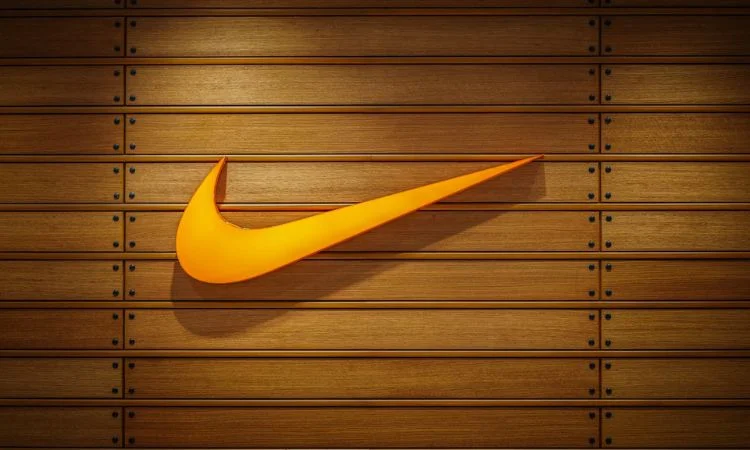
Source: Britannica
Nike’s Success Story began as a small, sleepy Oregonian town and has grown to become the world’s largest sportswear and footwear company. With a shoe and a T-shirt, it all started. It has evolved into a sophisticated and diversified multinational company. Nike is widely known for its clothing, accessories, and shoes. In addition to its Jordan Brand and Converse businesses, it sells merchandise under the Nike and Jordan names.
About Nike and How it Works?
Nike is a multinational sports company based in the United States that creates, produces, markets, and sells shoes, apparel, training aids, and services. Despite being designed with sports in mind, a large portion of its items is used for recreational or informal activities.
The majority of Nike’s merchandise is produced by independent contractors and distributed directly to consumers via independent retailers, franchisees, sales representatives, and Nike retail stores in addition to online.
The company’s global headquarters are located in Beaverton, Oregon, in the Portland metropolitan area of the United States. With over 44,000 employees worldwide and a $19 billion brand valuation in 2014, the corporation is the most well-known in the sports industry.
Nike offers their merchandise under the following brands: Nike Pro, Nike Golf, Nike+, Air Jordan, Nike Blazers, Air Max, and other brands.
Nike – Industry
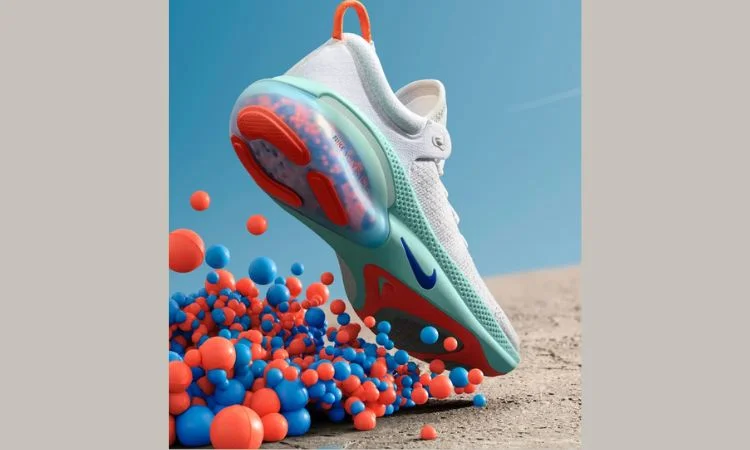
Source: Nike
As more people engage in sports and leisure activities to enhance and balance their stress, health, and work regulation, the sports industry is growing to become the largest in the world. As a form of both physical and passive recreation, it has grown in popularity.
Consumers are spending more money on sportswear, with accessories and sportswear making up a large amount of the price. Extremism defines the sports industry of the twenty-first century. As global markets grow more competitive, market research is becoming a crucial part of selling sports goods and accessories.
Thanks to people’s readiness to adjust to changing demographics and their quick adoption of cutting-edge technology, the sports equipment and accessory market is experiencing tremendous growth worldwide. The industry is expanding due to e-commerce, which is a significant retail channel that gives customers access to the entire selection of sports equipment producers these days. Since it is a one-stop shop for all sporting gear, it increases the marketability of athletic wear globally.
Sportswear and equipment sales were projected to reach $480 billion in 2021, and at a compound annual growth rate of 7.2%, the industry is predicted to reach $817 billion by 2026.
Nike- Name, Logo, and Tagline
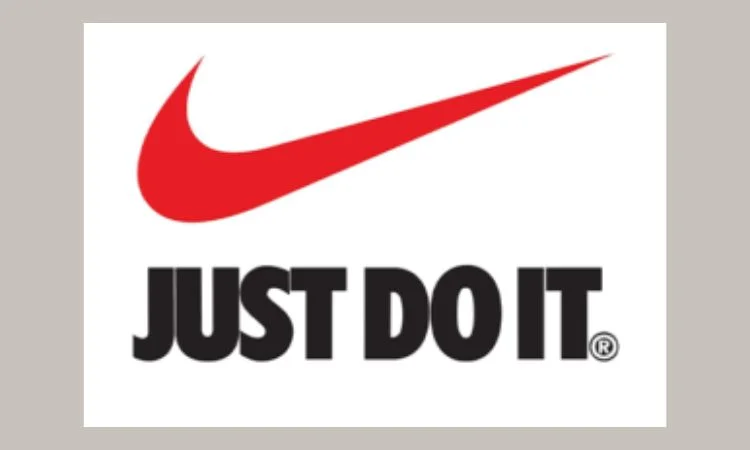
Source: The Brand Hopper
The Greek mythology, in which Nike is the Winged Goddess of Victory, is where the word “Nike” originated. The goddess’s wing inspired the creation of the “swoosh” emblem, which stands for the sound of motion, strength, drive, and speed.
Nike- Founders
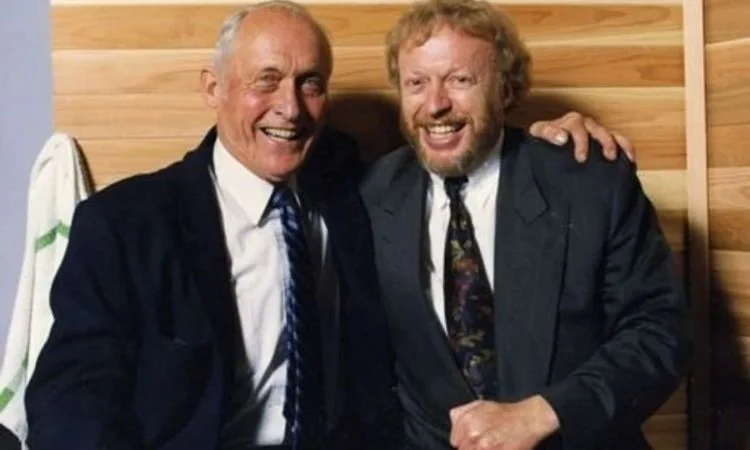
Source: Penji
On January 25, 1964, Bill Bowerman and Phil Knight started Nike, which was initially known as “Blue Ribbon Sports.” On May 30, 1971. it changed its name to “Nike”, Inc.
Phil Knight
American multimillionaire Philip Hampson Knight is an entrepreneur. In addition to being a co-founder, he served as Nike’s previous chairman and CEO. On July 23, 2020, Forbes listed Knight as the 24th richest person in the world, with a $54.5 billion net worth.
Furthermore, he is the CEO and co-founder of Laika, a firm that produces time-lapse films. Knight completed his coursework at Stanford Graduate School of Business and the University of Oregon. Under the guidance of coach Bill Bowerman, he participated in track competitions at the University of Oregon. Later, he co-founded Nike alongside Bowerman.
Bill Bowerman
Coach of track and field in the United States and one of the co-founders of Nike, Inc. was William Jay Bowerman. 31 Olympic athletes, 12 American record holders, and 51 All-Americans were under his tutelage.
The origins of Nike can be traced back to 1964 when the company was founded under the name Blue Ribbon Sports. After completing his undergraduate studies at the University of Oregon and earning his master’s degree at Stanford University, Phil Knight experienced two transformative experiences.
Nike- Startup Story
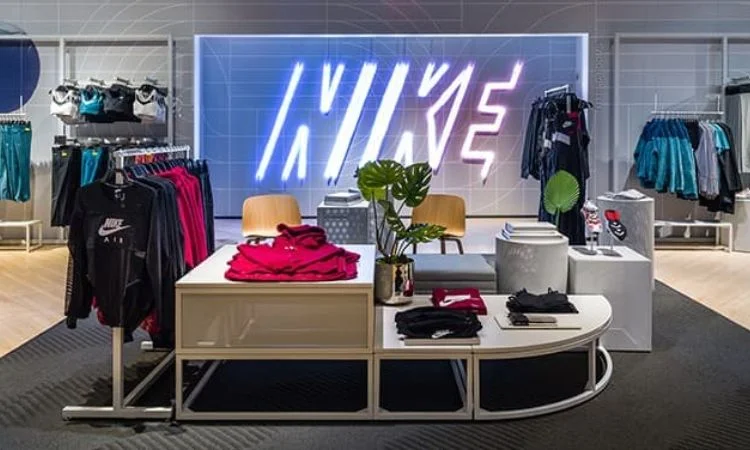
Source: Nike
He met Bill Bowerman, the coach of his track team, while he was a member of the University of Oregon track squad. Aside from his intense rivalry, Bowerman was obsessed with improving his running shoes and constantly testing out different models after picking up some knowledge from a local shoemaker.
Knight was the first runner to cash in on Bowerman’s shoes. Bowerman said he would bring one of his shoes and enhance it with his style, seeing Phil as a modest and cozy runner who was open to exploration.
Knight accepted the offer, and according to rumors, the shoes were so functional that his colleague Davis used them to win gold in the Olympic 400-meter track event in 1960. He said that Bowerman made Otis Davis’s shoes. After graduating from the University of Oregon, Knight went to Stanford’s MBA program. There, he prepared a thesis suggesting that the production of running shoes be moved from Germany to Japan, where labor prices were lower.
Even though he rejected the position of coach, the University of Oregon’s track and field team won four NCAA titles, finished in the top ten in the nation sixteen times, and won every season but one during his twenty-four years there.
Nike- Vision and Mission
“To bring inspiration and innovation to every athlete in the world,” reads Nike’s mission statement.
According to Nike’s mission statement, “We strive to maximize human potential because it is our mission.” We achieve this by developing ground-breaking sports innovations, producing our goods in a more environmentally friendly manner, assembling a diverse and innovative global team, and positively influencing the communities in which we live and work.”
Nike- Business Model and Revenue Model
The foundation of Nike’s business strategy is the production and distribution of sporting items, including clothing, equipment, and footwear, as well as some services. Everything is branded under one of the most recognizable names in the world.
Customer Segment
Nike offers a variety of equipment, footwear, and sportswear. Geographically, Nike’s market is split into four main segments based on revenue as well:
China, North America, South America, and the Asia-Pacific region
Africa, the Middle East, and Europe
Customer-Seller Relationship of Nike
There is virtually no interaction with customers other than self-service. The customer will research the brand or item either in-person at the store or online, make a buy, and utilize it. There will be some interaction with a salesman as needed. The official website also has a section dedicated to FAQs, along with customer service through phone, email, or live chat.
Value Proposition
Nike produces products that inspire individuals to engage in sports. The brand’s reputation, creativity, and quality all have a big impact on its products. This is the essence of the brand and what consumers desire to get out of a pair of Nikes.
Nike offers a large selection of gear for a variety of sports and pastimes. Getting a product that has been carefully studied and developed with the best raw materials and technology available is what matters to the audience, though.
Cost Structure
Nike incurs annual costs of almost $21 billion, primarily related to stocks and warehouses. An additional $3 billion has been set aside for marketing, encompassing expenses for advertising and promotion, sponsorship, marketing, brand events, and brand personality exhibition. Every year, more than $500 million is spent on other general and administrative expenditures.
Nike is the biggest retailer of apparel and shoes in the world, and the majority of its revenue comes from these sales. While a significant amount of money is invested in the development of its high-end, technologically advanced sports footwear, the bulk of its products are used regularly for leisure.
Along with other sports gear and accessories, Nike also sells balls, sunglasses, backpacks, gloves, electronic devices, and recreational goods for a range of indoor and outdoor activities.
| DATE | ORGANIZATION NAME | ROUND | AMOUNT |
| Dec 2, 2021 | AllStar Code | Grant | $500K |
| Oct 14, 2021 | SpringHill Entertainment | Venture Round | – |
| Oct 14, 2021 | The SpringHill Company | Private Equity Round | – |
| Nov 20, 2019 | HandsFree Labs | Corporate Round | – |
| Mar 4, 2014 | Reflektion | Series A | $8M |
| Oct 7, 2013 | Grabit Inc. | Series A | $6M |
| Jan 4, 2011 | Rock Health | Grant | $500K |
Nike- Competitors
Nike’s rivals include ASICS America, Steve Madden, Puma, Adidas, and Skechers USA.
Nike- Controversies
- Claims of Child Labor – In the 1990s, Nike faced criticism for employing minors as laborers in factories it contracted with to produce footballs in Cambodia and Pakistan. Nike continues to outsource production to companies that operate in areas where it is difficult to prevent child labor due to a lack of regulation and control, despite making attempts to cease or at least reduce the practice.
A 2001 study into a Nike facility in Cambodia found cases of child labor and unfavorable working conditions. Six young ladies, often working sixteen hours a day, were the subjects of the documentary.
- Paradise Papers: Nike was among the companies that used offshore organizations to cheat taxes, as per the private electronic documents associated with offshore investment that were made public on November 5, 2017.
- Strikes at Chinese Factory: In April 2014, a strike at the Yue Yuen Industrial Holdings Dongguan shoe factory, which manufactures shoes for Nike and other brands, took place, making it one of the biggest in mainland China. An employee was paid 250 yuan less each month by Yue Yuen. Yue Yuen makes 3000 yuan a month on average. The plant has 70,000 employees. For nearly twenty years, this practice has been followed.
Nike- Future Plans
Nike has not been immune to the COVID-19 pandemic. 2020 saw a 1% decline in revenue following a 38% decline the quarter before. However, the market is thrilled about the company’s capacity to increase profit and create significant growth in its digital platform.
Investors have been convinced by Nike’s success that the company is gaining market share throughout the epidemic and will emerge from it stronger than its competitors. These factors, especially the business’s digital skills, bode well for the company’s competitors over the next five years.
In 2015, Nike first announced a target of generating $50 billion in revenue annually by the year 2020. It was forced to delay it until 2022 due to past difficulties when it lost momentum against Adidas, but despite the pandemic’s setbacks, the company is on the way to achieving that objective. It would need to grow sales from $39.1 billion in fiscal 2019 at a compound annual rate of almost 9% to achieve this.
Like the rest of the clothing business, the company was well-positioned to take advantage of the demand after the pandemic was gone. Shops reopened, and there was a buying frenzy on streetwear, including the iconic Nike sneakers. Thanks to its digital momentum and pandemic recovery, Nike should be able to surpass its $50 billion revenue targets in 2022 and reach more than $60 billion by 2025—three years later.
| Year | Revenue |
| 2014 | 27.80 B |
| 2015 | 30.60 B |
| 2016 | 32.38 B |
| 2017 | 34.35 B |
| 2018 | 36.40 B |
| 2019 | 39.12 B |
| 2020 | 37.40 B |
| 2021 | 44.54 B |
| 2022 | 46.71 B |
| 2023 | 51.22 B |
Conclusion
The success of Nike is no coincidence. Nike has continuously dominated the athletic apparel market thanks to its creative marketing techniques, dedication to high-quality products, and ability to capitalize on the emotional bond that exists between athletes and their equipment. The story of Nike’s success began in 1962 at the University of Oregon in the United States, where a middle-distance runner named Phil Knight and his coach Bill Bowerman, who specialized in competitive sports, realized it would be risky to import high-tech, low-cost athletic shoes from Japan into the country.















